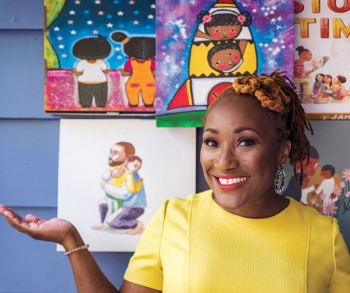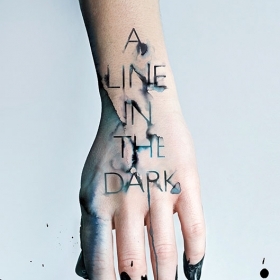Mijha Butcher Godfrey ’98, an attorney with a passion for social justice, has launched Jambo Book Club, a book subscription service specializing in diverse, inclusive books for kids from newborn to age 13. Godfrey and her husband, Runako, sent their first monthly shipment of two books to 20 families a year ago, and the club has grown steadily since. The covers of the boxes in which the books arrive are printed with works created by artists of color.
Why name the club Jambo?
Jambo means hello in Swahili. It also means welcome. We wanted a word that would mean everyone is welcomed here, everyone is celebrated. It also sounds fun in English.
What inspired you to start Jambo?
When my now 7-year-old daughter was younger, my father-in-law got her a subscription to a Dr. Seuss children’s book club. Most of the books were published in the 1940s and 1950s, and were stubbornly white. My husband and I said, “This just isn’t the way the world is.” We wanted to find books representative of the world she lives in today. And we said, “Wouldn’t it be great if there was a service that could send us these books so we didn’t have to find them ourselves?”
Who’s represented in the books you send?
Everybody—African Americans, Native Americans, Hispanics, East Asians, South Asians, mixed race kids. We send books that are a mix of different cultures, and most are by authors in the U.S. and Canada. We like to show that all books about people of color don’t have to take place in another country. They can take place right here. These stories also don’t have to be about dia de los muertos or crossing the border or segregation. We have stories about fighting dragons or how much you hate going to bed.
Why do diverse children’s books matter?
It’s really important for kids of color to be able see themselves in all environments and places so they know they belong everywhere. My hope is that by seeing yourself everywhere early, you internalize that you belong everywhere. It’s important for white children to see children of color everywhere, too, so they also see they belong. My goal is for the kids who are getting our books now to be sitting in a room one day, grown up, and stop and say, “Wait, how can we make this decision when our community isn’t reflected here?”
Blumberg is a Houston-based freelance writer.







We ask that those who engage in Wellesley magazine's online community act with honesty, integrity, and respect. (Remember the honor code, alums?) We reserve the right to remove comments by impersonators or comments that are not civil and relevant to the subject at hand. By posting here, you are permitting Wellesley magazine to edit and republish your comment in all media. Please remember that all posts are public.